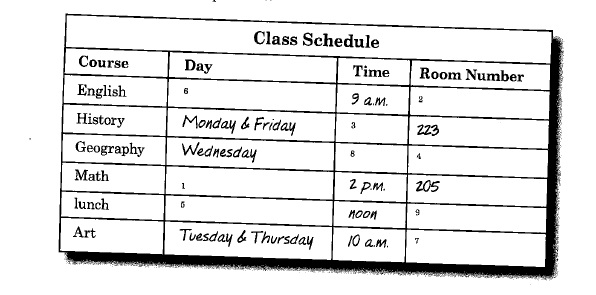
(This posting includes a handout which you are welcome to use with your students.)*
At first, this pair-work activity looks like it’s about getting students to talk a lot by filling information in a chart. But that’s not the most important value of it.
Yes, students will talk a lot during this. But by including a short pre-exercise, they will see how they should ask clarification questions when they need more information or if they didn’t understand. Asking clarification questions is the strategy that they can use in future conversation situations in and outside the classroom.
In this activity, the students will be filling in information about a class schedule. They’ll need to listen to their partners tell them the name of courses, days, times and room numbers. They’ll have many chances to ask questions, especially if they don’t understand.
There are three steps in this activity:
- Step 1: Brief work with a model showing how to do Step 2.
- Step 2: Pair activity (Student A/ Student B)
- Step 3: Exercise to do if they finish before other pairs have finished.





